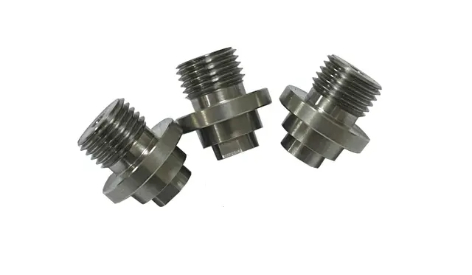Views: 0 Author: Site Editor Publish Time: 14-07-2025 Origin: Site








When selecting pump and valve parts for specific industrial applications, industries often face various challenges in choosing the correct components that will ensure optimal performance, reduce downtime, and minimize operational costs. The right choice of pump and valve parts plays a crucial role in the efficiency and reliability of industrial systems, making it essential to select parts that meet the specific needs of the system. Using high-quality pump and valve components can significantly reduce maintenance costs, prevent unexpected breakdowns, and enhance overall operational efficiency.
Before selecting pump and valve parts, it's essential to understand the specific needs of the system. Various factors influence the selection process, including flow rate, pressure, fluid type, and operating conditions. By accurately determining these requirements, industries can select components that will ensure efficiency and durability.
The flow rate and pressure requirements of a system are two of the most critical factors in choosing the right pump and valve parts. The flow rate refers to the volume of fluid that needs to be transported through the system per unit of time, while pressure refers to the force exerted by the fluid as it moves through the system.
For example, a system that requires high flow rates but operates at lower pressure levels would require a different type of pump compared to a system that operates at high pressure with moderate flow rates. By accurately assessing the flow and pressure needs, you can ensure that the pump and valve parts selected will meet the system's demands without overloading the system or compromising efficiency.
Another important consideration when selecting pump and valve parts is the type of fluid that the system will be handling. Different fluids, such as water, chemicals, slurries, or viscous liquids, have different flow characteristics and require specific materials and designs for optimal performance. For instance, a pump designed to handle water may not be suitable for pumping chemical solutions, which can be corrosive and require specialized materials to prevent degradation.
Additionally, systems that handle slurries or liquids with solid particles require pumps and valves that can handle the abrasive nature of these materials. Choosing the wrong pump or valve can result in accelerated wear, corrosion, and reduced lifespan of the components.
The operating conditions of the system also play a crucial role in selecting pump and valve parts. Temperature extremes, harsh environmental factors, and varying system pressures can all influence the performance and durability of components. For example, systems that operate in high-temperature environments, such as power plants or chemical processing facilities, may require pump and valve parts made from materials with high-temperature resistance, such as stainless steel or specialized alloys.
Environmental factors, such as exposure to corrosive chemicals or outdoor weather conditions, can also impact material selection. Pumps and valves used in these conditions must be resistant to corrosion, wear, and environmental damage to ensure longevity and minimize maintenance needs.

There are various types of pumps designed to handle different types of fluids and system conditions. Selecting the right pump is essential to ensure efficient operation, minimize wear, and reduce maintenance costs.
Centrifugal pumps are ideal for applications that require high flow rates and low to moderate pressure. These pumps are commonly used in water treatment, HVAC systems, and industrial processes where large volumes of liquid need to be moved efficiently. The simplicity and efficiency of centrifugal pumps make them a popular choice, but they may not be suitable for high-pressure applications or for handling viscous fluids.
Positive displacement pumps, including piston, diaphragm, and gear pumps, are designed to move a fixed amount of fluid per cycle. These pumps are ideal for handling high-pressure applications and fluids with higher viscosity, such as oils, chemicals, or slurry. Positive displacement pumps ensure a consistent flow regardless of pressure, making them ideal for applications that require precise control of fluid volume and pressure.
Diaphragm pumps are widely used in applications where chemicals or fluids containing solids need to be pumped. These pumps are self-priming and offer excellent handling of corrosive fluids, slurries, and viscous materials. The ability to pump aggressive and abrasive materials makes diaphragm pumps indispensable in industries such as pharmaceuticals, food processing, and chemical handling.
Gear pumps are specifically designed for pumping viscous fluids, such as lubricants and oils. The interlocking gears create a consistent flow by trapping and moving fluid through the system. These pumps are highly efficient at handling thicker fluids and are commonly used in applications such as lubrication systems and hydraulic circuits.

Just as selecting the correct pump is essential, choosing the right type of valve is crucial for controlling fluid flow and ensuring system safety and efficiency.
Ball valves are widely used in applications that require quick shutoff or isolation of fluid flow. The simple design of a ball valve, with its rotating ball mechanism, allows for quick and reliable control over the fluid's passage. Ball valves are typically used in gas and liquid pipelines, where precise flow control is not necessary, but quick isolation is essential.
Globe valves are used in applications where precise flow regulation is needed. These valves are designed to control the flow of fluid by adjusting the position of a movable plug or disc inside the valve body. Globe valves are ideal for applications such as throttling and regulating fluid flow in chemical, water treatment, and steam systems.
Check valves are designed to prevent backflow in a system, ensuring that fluid flows in only one direction. These valves are essential in systems where backflow could cause contamination, system damage, or reverse the flow of liquids. Check valves are commonly used in water, oil, and gas systems to maintain proper flow direction and avoid operational issues.
Gate and globe valves are commonly used in high-pressure and high-flow applications. Gate valves are typically used in systems that require full flow with minimal resistance, while globe valves are used when flow regulation is necessary. Choosing the right valve depends on the specific pressure, flow, and operational needs of the system.
Once the appropriate pump and valve types have been selected, it's important to ensure that the components are compatible with the existing system. Proper sizing of pumps and valves is crucial for achieving optimal performance and minimizing energy consumption.
Compatibility ensures that the selected components will work seamlessly with the existing infrastructure. When choosing pumps and valves, it's important to verify that the components are designed to integrate with the system's piping, pressure requirements, and overall operational structure. Incorrect compatibility can result in leaks, inefficiencies, or premature wear.
Correct sizing is essential to achieving the desired flow rates and pressures while minimizing energy consumption. Over-sizing a pump or valve can lead to wasted energy and increased operational costs, while under-sizing can result in poor performance and potential system failure. By using accurate calculations and considering the system's requirements, businesses can ensure that the pumps and valves selected are perfectly sized for optimal performance.
In conclusion, selecting the right pump and valve parts for your industrial system is critical for ensuring efficient operation, minimizing maintenance costs, and extending the lifespan of the components. High-quality pumps and valves, when chosen correctly and maintained properly, can significantly reduce the frequency of repairs, downtime, and overall operational costs. To achieve the best results, it's essential to match the components to the system's specific requirements, taking into consideration factors such as flow rate, pressure, fluid type, and operating conditions.
When in doubt, consulting with professionals and experts in the field is always recommended to ensure customized solutions and proper sizing for your industrial system. By investing in high-quality, well-suited parts and implementing regular maintenance practices, businesses can enhance operational efficiency, improve safety, and reduce long-term maintenance costs.
Our OEM Stainless Steel/Brass CNC Machining Mid-Size Pneumatic Valve Body is engineered for precise flow control in pneumatic systems used across industrial automation, energy, and manufacturing sectors. Manufactured in Jiangsu, China, this valve body is available in premium stainless steel or brass to suit different environmental and performance requirements. With ±0.05 mm tolerance, every component meets stringent quality standards for durability and operational reliability.
The CB310 Custom Slewing Drive is engineered for solar power tracking systems and other industrial applications that require smooth, precise rotational control. Designed and manufactured in Jiangsu, China, this slewing drive integrates a single-row cross roller bearing for maximum stability, and is compatible with either DC motors or hydraulic motors, depending on your project requirements. With diameters ranging from 200 mm to 4000 mm, this drive is suitable for a wide range of solar panel arrays and mechanical systems.
Add: 20/FL., 26 North Zhongshan Road, Nanjing, Jiangsu, China
Tel: 0086-25-83317070
Fax: 0086-25-83303377
E-mail: peter@jocmachinery.com


